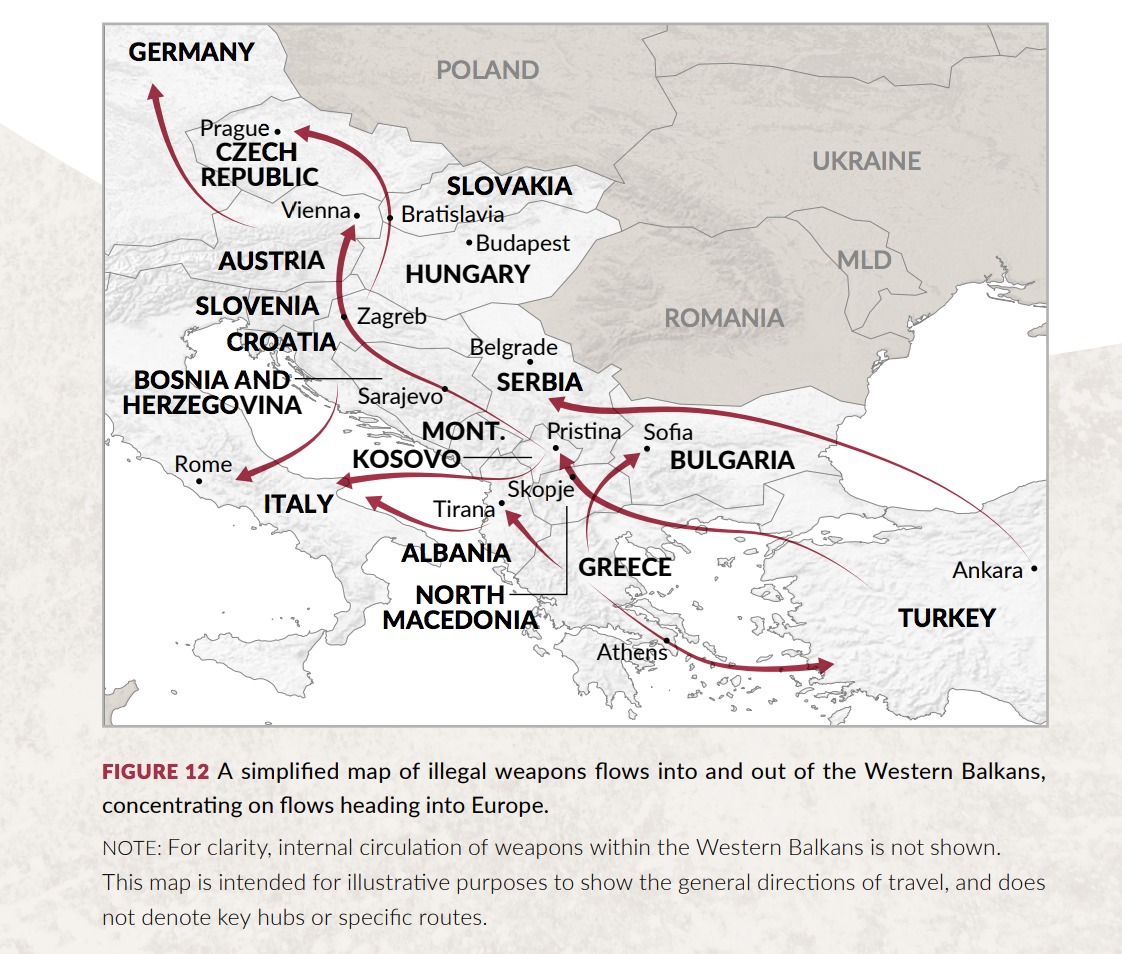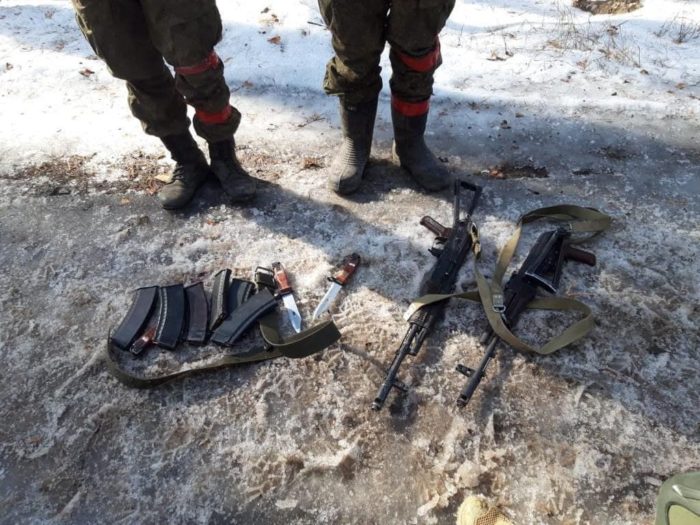The Russia-Ukraine war has led to a proliferation of illegal weapons within Ukraine. However, the nature of this proliferation diverges significantly from conventional assumptions about arms trafficking, a new report has found.
Rather than being an organized criminal enterprise, the movement and sale of illicit weapons in Ukraine are occurring in a largely organic, opportunistic manner driven by individual actors.
The report by the Global Initiative Against Transnational Organized Crime (GI-TOC), an NGO specializing in expert analysis and research on organized crime markets, networks, and responses, found that despite a significant increase in the number of Russian "trophy" weapons in Ukraine, valued between $1 and $5 million according to official estimates, there is currently no evidence of illicit arms flowing from Ukraine to Europe.
Crucially, the illegal weapons circulating are overwhelmingly Soviet/Russian-manufactured arms captured as "trophy" weapons on the battlefield or seized from abandoned ammunition dumps.
Isolated incidents like the June 2022 case involving a criminal gang fraudulently obtaining a grenade launcher and machine gun appear to be exceptions rather than the norm. Moreover, some reports by Western media, like the CBS documentary “Arming Ukraine,” appeared to be largely exaggerated and based on unreliable Russian sources, as previous analysis by Euromaidan Press has demonstrated.
One key factor limiting more systematic arms trafficking in Ukraine is the relatively low black market prices for weapons, particularly in areas close to the front lines. With prices as low as $500-700 per weapon when sold in batches of 10 or more, the profit incentives pale in comparison to other illicit trades like narcotics trafficking. The high risks involved, with Ukraine treating the loss of weapons as a top priority crime, further deters the large-scale organization of the trade.
Help us make more articles like these -- become a patron.
Instead, the report's findings suggest the trade is being driven by a diverse range of opportunistic actors, including civilians, soldiers misappropriating weapons, gunsmiths, and even priests. These players are acquiring small caches of 1-10 weapons and selling them locally for a few thousand dollars, or keeping them for self-protection. The sheer volume of discarded weapons and ammunition on active battlefields provides a vast supply to fuel this organic proliferation.
Ukrainian authorities' prioritization of weapons control also serves to prevent systematic arms trafficking operations from taking root. Measures like strict oversight of supplied arms, mandatory registration of trophy weapons, and monitoring of all lost/stolen arms demonstrate Ukraine's commitment to arms control despite the challenging circumstances.
However, this situation is not without risks. While systematic transnational trafficking may be limited currently, the immense number of weapons circulating illegally within Ukraine fuels increasing insecurity.
According to the research, of particular concern is the prospect of traumatized ex-soldiers returning home with illicitly acquired arms, potentially lowering inhibitions towards lethal violence in civilian society. Over time, there are also risks that today's diffuse flows could consolidate into more organized trafficking operations if facilitators emerge to coordinate larger-volume movements. Port cities like Odesa have historically been hubs for arms smuggling to conflict zones abroad when unimpeded.
However, according to the report, the scale of potential trafficking will depend heavily on the trajectory of the war and future military and political developments in Ukraine.
In essence, Ukraine has so far been able to prevent the emergence of a cohesive arms trafficking enterprise amid the fog of war.
Trending Now
However, the abundance of weapons in circulation and the dynamic frontline situation generate persistent dangers. Maintaining the current prioritization of stringent weapons monitoring and control systems, disarmament initiatives, including buyback programs, and resilience against the encroachment of organized crime will be crucial to mitigating potential arms proliferation risks, both within Ukraine and potentially radiating outwards.
Illegal weapons in Western Europe: the dominant supply is from the Balkans
In countries like France, Belgium, Netherlands, and Sweden, there is a significant demand for illegal weapons from organized crime groups involved in drug trafficking and other violent criminal activities. This demand has kept prices high - for example, an AK-47 can sell for €2,000-€3,000 in France/Belgium. However, the supply of weapons to these markets is still primarily coming from traditional sources like the Western Balkans region, not Ukraine.

There are some anecdotal reports of supply chains shifting somewhat away from the Balkans towards countries like Romania, Bulgaria, etc. But the Balkans remain the dominant source. So far, weapons smuggled out of the front line in Ukraine do not appear to have significantly penetrated these major Western European criminal markets yet.
Weapons from the Western Balkans are cheaper than those from Ukraine, and the long-established Balkans networks have been supplying criminals in Western Europe for decades.
On the English-language dark web, most listings offering Ukrainian weapons for sale were assessed as likely scams by researchers. No significant flows of Ukrainian weapons to Western countries via the dark web have been detected.
However, there does exist a limited, geographically-confined retail trade in converted/reactivated firearms on Russian-language dark web forums. According to the research, this Russian dark web arms trade appears to be localized and not supplying weapons abroad on any meaningful scale so far.
Moving forward, the Arms Monitor aims to expand its coverage area to better understand potential arms trafficking flows stemming from the war zone. This includes monitoring key overland transit routes through countries like Poland and Hungary for signs of smuggling. The Monitor also plans to research the spillover effects rippling eastward into Russia itself, the Caucasus region, and Central Asia, where initial indicators like surging gun violence in Russian regions bordering occupied Ukraine suggest illicit arms are already spreading.
In 2023, the Global Initiative Against Transnational Organized Crime (GI-TOC) established an arms monitor to investigate whether Western-supplied weapons were being trafficked out of Ukraine. This monitor utilized data from underworld sources, law enforcement, dark web marketplace surveys, and official arms seizure reports, among other sources.
Read more:
- Weapons from Donbas rush back to Russia sparking a rise in violent crime
- Ghost ships reveal North Korea's secret arms trade with Russia posing threat to Ukraine
- "Dangerous" arms shipments from North Korea to Russia trouble US
- Support for gun ownership in Ukraine jumps amid warUK intel: Sanctions continue to disrupt key inputs for Russia's defense industry
- Norway approves direct arms sales to Ukraine

